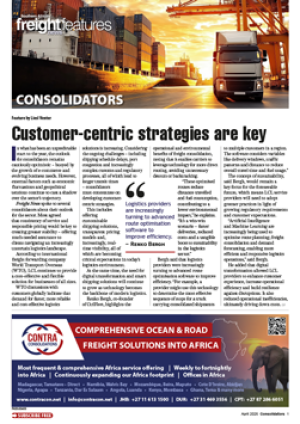Tanzania is making strides in modernising its infrastructure, and its progress is poised to impact the broader East African region. According to Abou Massinda of Tanzania Standard Bank, improvements in port efficiency, power generation and transportation are contributing to the nation’s growing role as an economic hub.Speaking to Freight Newsrecently, Massinda highlighted the 30-year concession agreement between the Tanzania Ports Authority (TPA) and DP World as pivotal in the country’s development. “The increased efficiency at the ports has led to faster docking times and quicker movement of goods in and out of the country, inviting more investment and industrial growth,” he said. Massinda added that East Africa remained underdeveloped compared to regions like South Africa, but this could be an advantage. “Decision-makers can act quickly and implement straightforward solutions,” he explained. The East African Community (EAC) plays a crucial role in facilitating this, with leaders frequently meeting to discuss regional challenges and opportunities. “The EAC has been essential in uniting countries to address common issues,” he said.The region’s growing power-sharing capacity was another highlight, said Massinda. “Countries like Kenya are making strides in power generation and the development of transmission lines is helping to improve regional energy access. These are simple problems that can be solved collectively. We are learning from each other – Kenya’s power generation experience and the efficiency improvements at Mombasa port, for instance.”In terms of logistics, the region is focusing on rail development as a unifying theme. Tanzania’s ongoing development of the Standard Gauge Railway (SGR) is transforming the movement of goods across the country and beyond. Massinda said the SGR now stretched into Burundi and the Democratic Republic of Congo (DRC), with the Tazara rail line undergoing rehabilitation as part of a broader push to improve interconnectivity. “Rail and trucking are essential for seamless movement of goods and the rehabilitation of Tazara will play a crucial role in addressing cross-border logistics challenges.” He also highlighted the World Bank’s efforts to alleviate bottlenecks along the Zambia-Tanzania border.According to Massinda, East Africa is focusing on enhancing its digital infrastructure. He cited the success of the East African digital passport system, which allows seamless entry and exit across the region. “We have a system that works and we are now focusing on logistics connected to our ports,” he said.While the region has proven its success at working together, continued collaboration will be key to overcoming challenges in the future. “What we want to see is companies emerging in one country and expanding into neighbouring regions, backed by friendly policies that facilitate cross-border trade and talent exchange,” said Massinda, indicating that it was by working together that the region would foster long-term change and prosperity. LV

